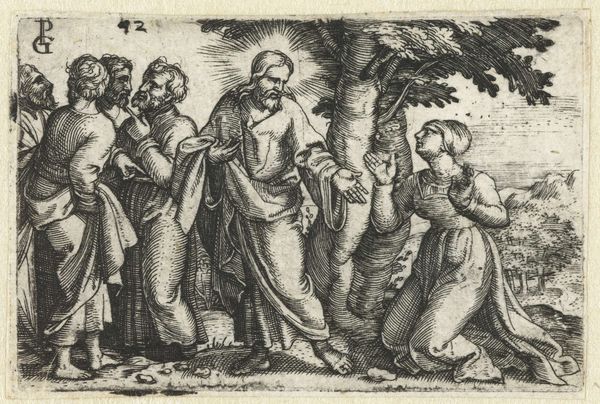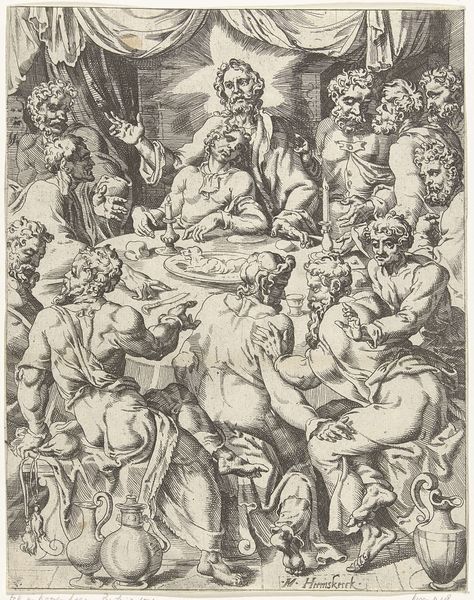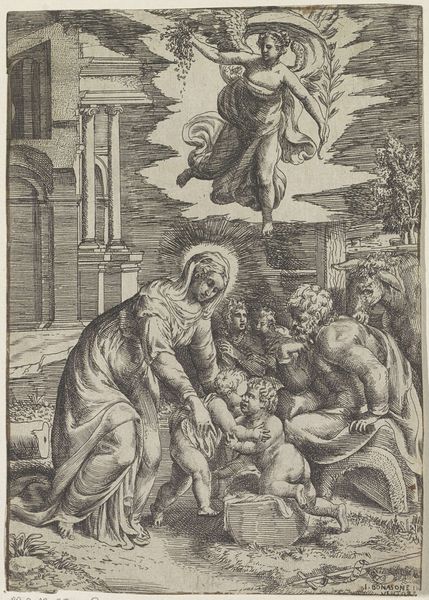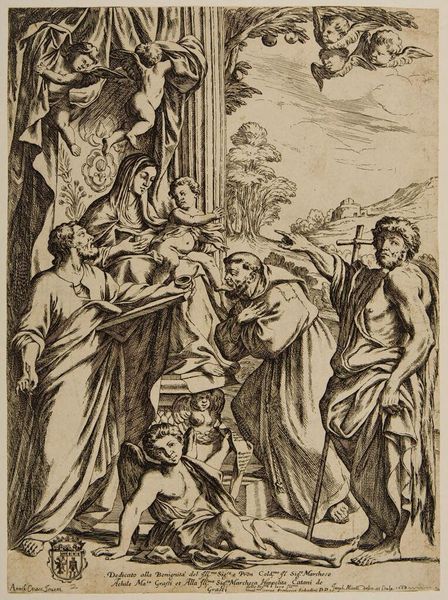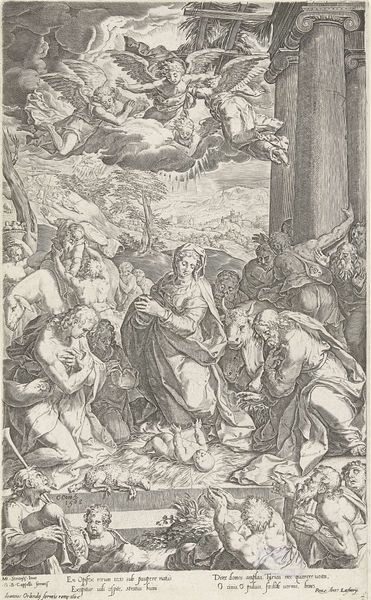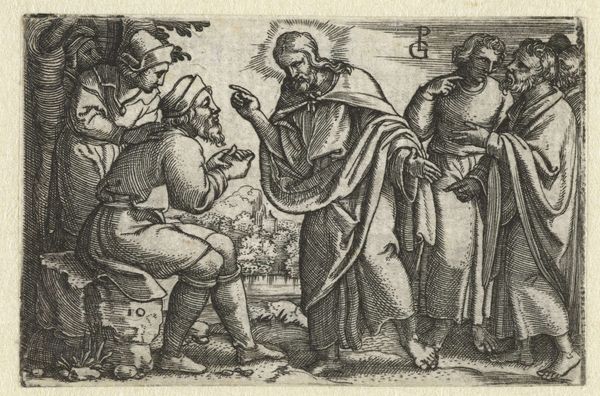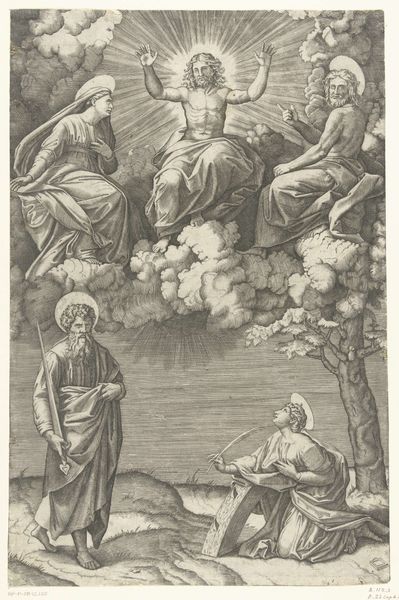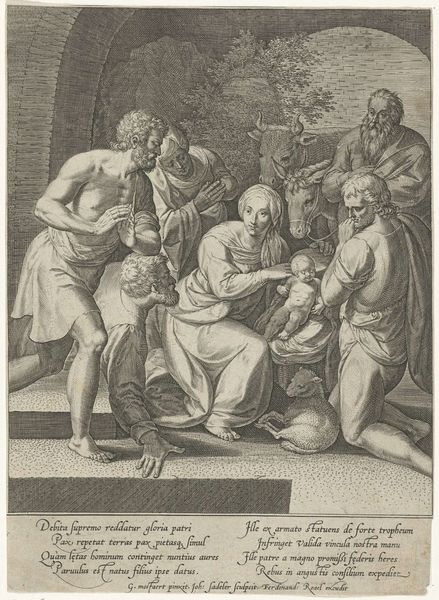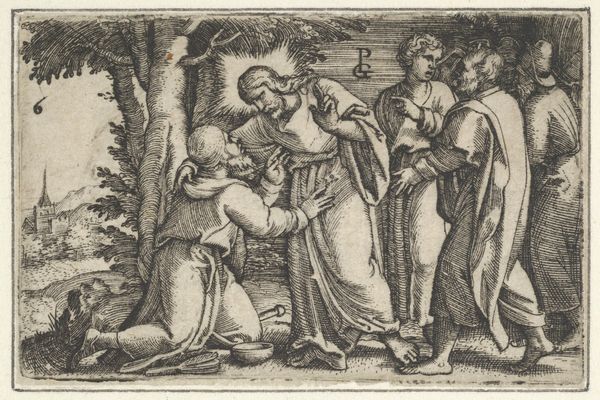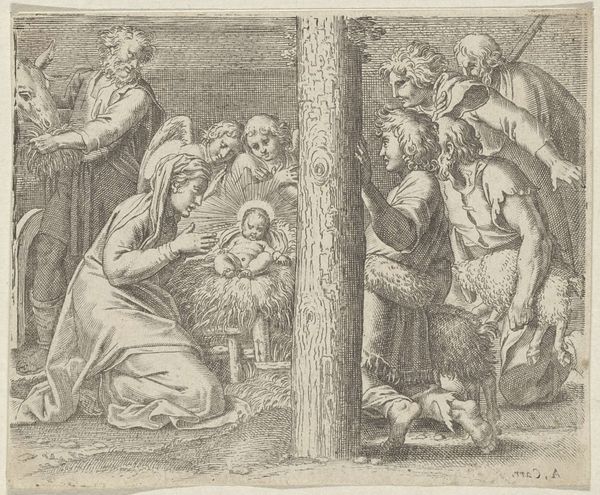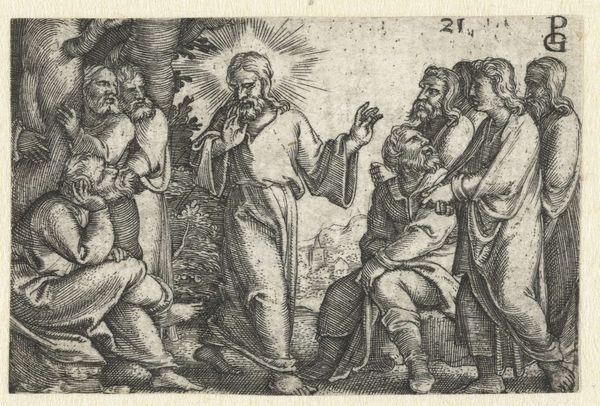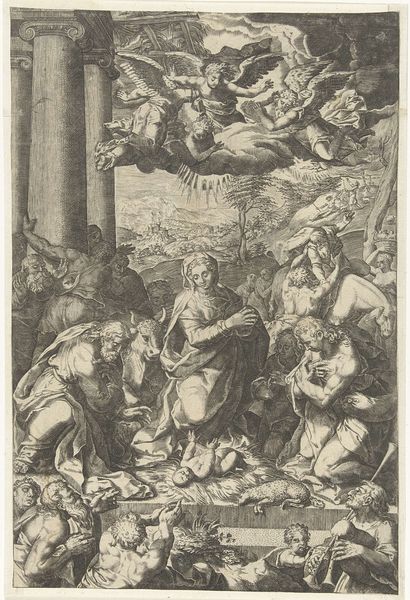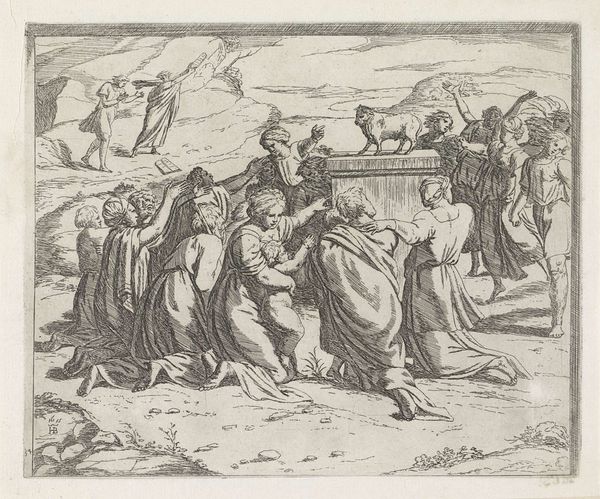
print, engraving
# print
#
figuration
#
line
#
history-painting
#
northern-renaissance
#
engraving
Dimensions: height 41 mm, width 60 mm
Copyright: Rijks Museum: Open Domain
Curator: Look at the dense detail in this print titled "Christus benoemt Petrus als hoofd van de kerk," or "Christ Appointing Peter as the First Pope." It was created by Georg Pencz around 1534-1535. Editor: It's visually quite dramatic! I’m immediately struck by the stark contrasts in value, particularly how they shape and illuminate Christ’s figure with light, as if literally charged with power. What was Pencz working with here? Curator: Pencz worked in engraving. The meticulous line work builds tone and conveys depth, especially when you consider how readily prints circulated, effectively disseminating ideas throughout the Northern Renaissance. Editor: The arrangement of figures and the divine imagery absolutely emphasize a hierarchical power structure. We have Christ appointing Peter while God the Father hovers above on a cloud, orchestrating the scene. Did people take that imagery literally at the time? Curator: This would have been understood as Peter receiving authority as head of the church—establishing apostolic succession. Consider too, the material context: printmaking allows for widespread dissemination, shaping the popular understanding of doctrine. Editor: I notice that the robes the figures are wearing have incredible detail within the hatching of the lines and wonder about how the social structures or expectations around these figures influence their visual representation? Curator: The textures of those robes convey status through visual richness. Clothing production at the time relied heavily on skilled labor—linen cultivation, weaving, tailoring—these details all speak to value invested. Pencz seems aware of that as he includes them. Editor: Absolutely. Beyond its obvious theological function, the artwork highlights the power and manual skill involved in printmaking and material culture itself. The clothing here symbolizes that the artwork is worth something significant. Curator: Right, so seeing it this way we understand the distribution of power but also of production itself in this detailed rendering. Editor: Thinking about both production and symbolic transmission makes this work all the more relevant today, even though it speaks to the far removed values of early Christianity! Curator: Agreed. Considering those layers offers unique insights into art, craft, belief, and labor of that period.
Comments
No comments
Be the first to comment and join the conversation on the ultimate creative platform.
